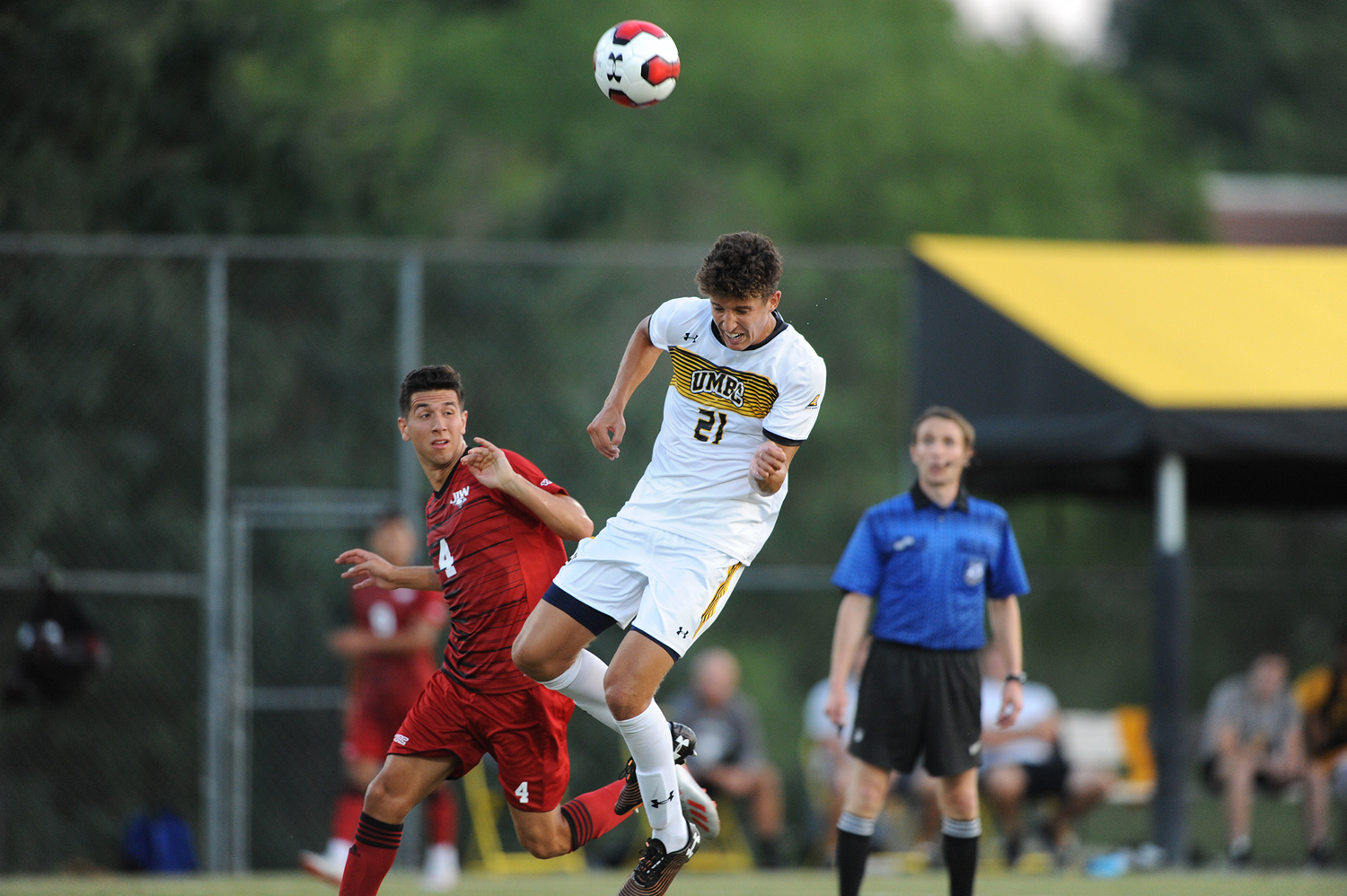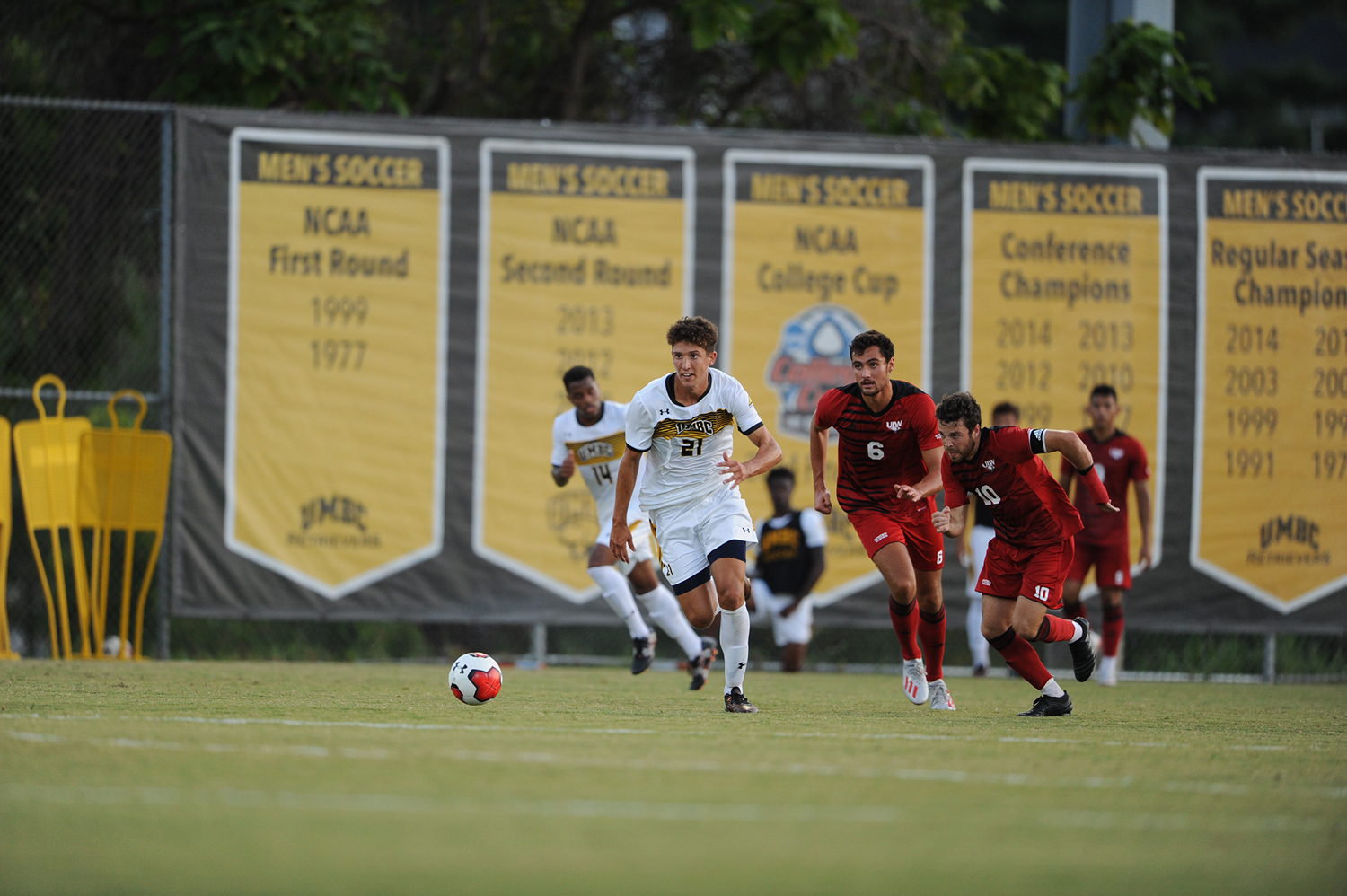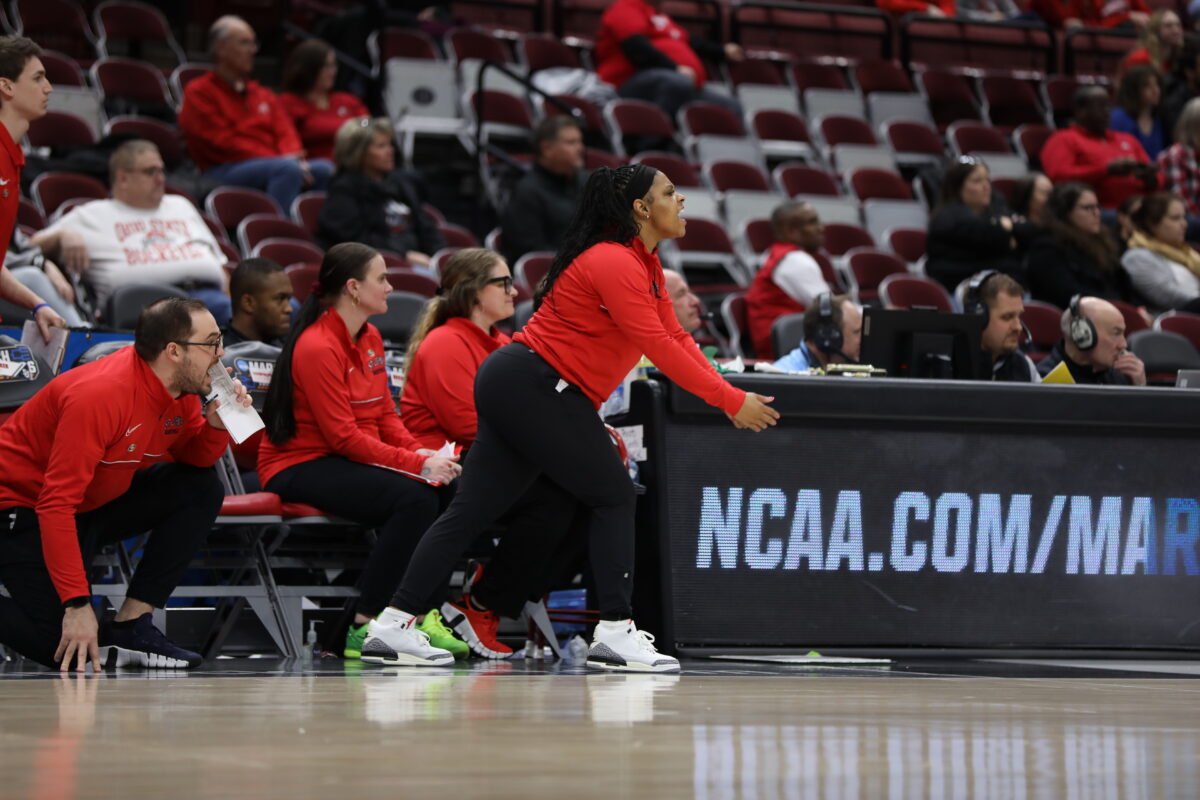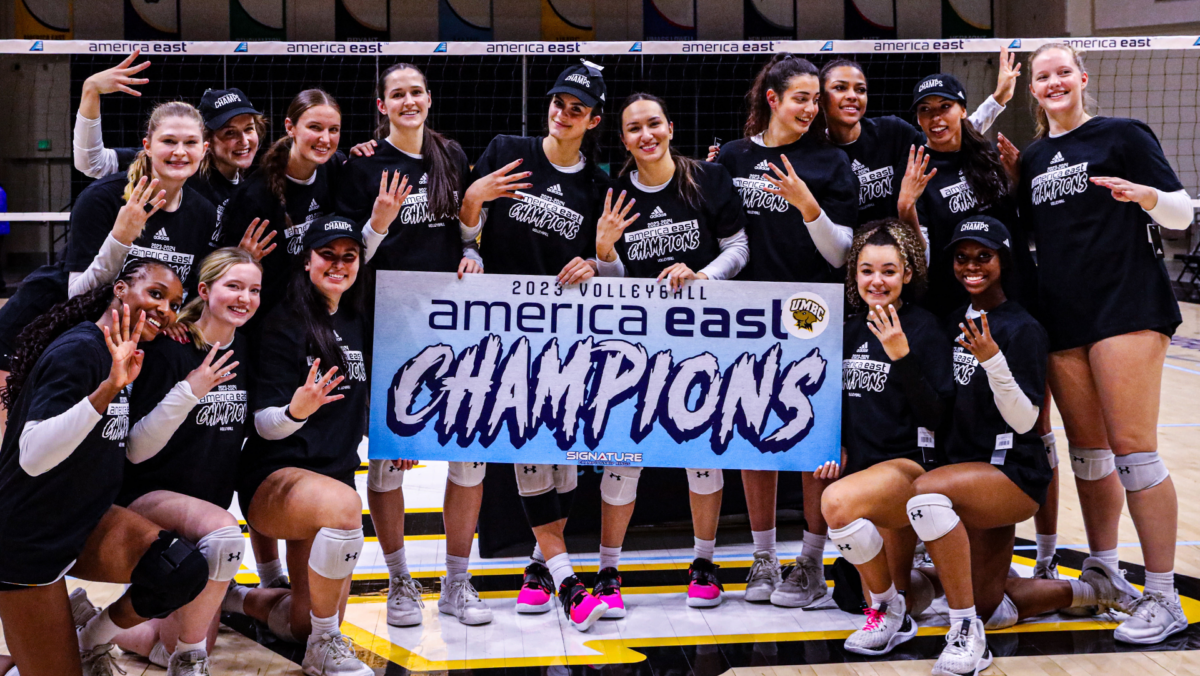When UMBC Men’s Soccer Coach Anthony Adams traveled to Canada for a former player’s wedding, he didn’t expect to come away from the trip with a significant donation to the team. But then again, he wasn’t all that surprised; his players usually found ways to give back.
The gift came from Liam Paddock ’12, psychology and sociology, who played soccer at UMBC from 2009 to 2012. After catching up with Adams at the wedding of teammate Milovan Kapor ’13, economics, Paddock asked if there was anything the team needed—after all, UMBC Men’s Soccer had made a huge impact on his life. “They backed me in hard times, connected me with the right people, and continued to give me opportunities throughout my years there,” he says. “So, now I’m in a position to, giving back to UMBC Men’s Soccer makes sense.”
Adams immediately thought of the VX system, a wearable piece of technology that helps players track their movements and their heart rates. Adams hoped to get his hands on the technology to better train his athletes.
“As much as we can, we want to be on the cutting edge. Science is a big part of sports, and this is information we didn’t have in the past,” Adams explains. “Monitoring systems [were] just the next logical step for us.”

The VX System, and others like it, has become invaluable to many soccer teams because it can be used to foresee possible injuries, says Adams. This technology, which players don under their jerseys during practice and games, lets coaches see important pieces of performance data, all of which are presented via simple, comprehensive metrics on the system’s custom software. An unusually high heart rate, for example, can indicate that a player may be fatigued and at greater risk for a muscular injury.
Ryan Becher, ’23, a midfielder, used the VX system as a part of another team, prior to coming to UMBC. “The training staff noticed my numbers were getting lower, so they started to talk to me,” he remembers. He ended up having some back problems and being unable to play for two months, but he believes the situation could have gotten much worse if his coaches hadn’t known to intervene so early.
On top of aiding with injury prevention, the VX system also helps players improve their gameplay. Though the UMBC team has only been using the technology since the start of this season, Ryan’s brother and fellow teammate, Jackson Becher, ’22, psychology, has already found these functions useful. “We get my max heart rate, how fast I’m sprinting, how often I’m sprinting, and how far I’m running,” he says. “So being able to look at that makes it easier for me to understand where I need to be and what I need to do to improve.”
Adams says that giving back is part of the soccer team’s DNA, and the coach doesn’t shy away from asking alumni to pitch in. This past season, the team needed a new couch for their locker room, but didn’t have the money to buy one. Adams sent out an email to soccer team alumni and, within 30 minutes, three alumni had replied, collectively donating enough to cover the cost of the couch.
But this relationship with alumni goes far beyond donations. For Paddock, the friendships he made while playing for UMBC became some of the most important in his life. “There is a genuine sense of family,” he explains. “And while I think that term gets thrown around, I feel it every time I go back to Baltimore.”
— Johanna Alonso ’20
*****
All photos courtesy of UMBC Athletics.
Tags: Athletics, Fall 2019, Impact, Men's Soccer




